*Ed. Note: For this edition of 5 Questions for Contemporary Practice, Thom Donovan reviews It’s the Political Economy, Stupid, at the Austrian Cultural Forum New York. Donovan’s piece will also appear in a forthcoming issue of Lalit Kala Contemporary Journal, Lalit Kala Akademi, Delhi, in July 2012.
With the collapse of the financial markets in 2008 and subsequent bail-outs of US banks and financial groups came unprecedented criticism of governmental collusion with finance capitalism, criticism that has most recently given us the “Occupy” movement and other waves of protest and resistance worldwide. Oliver Ressler’s and Gregory Sholette’s show at the Austrian Cultural Forum, It’s the Political Economy, Stupid, foregrounds aesthetic responses by groups and individuals to the financial crises ongoing since 2008. What the curators hope to achieve is clearly stated on a wall as one walks into the exhibit:
Today, the very idea of the modern nation state is in jeopardy as the deterritorialized flow of finance capital melts down all that was once solid into raw material for market speculation. This exhibition represents one response to this crisis. It derives its title from candidate Bill Clinton’s 1992 campaign slogan, “It’s the economy, stupid,” modified here by the Slovenian philosopher Slavoj Žižek.
It’s the Political Economy, Stupid brings together an international group of artists who use their work to critique 30 years of neoliberal globalization, privatization, flexible work schedules, deregulated markets, all of which have driven most of the world’s governments to wholly or partly abandon their previous role as arbitrators between the security of the majority and the profiteering of the corporate sector.
Rather than acquiesce to the calamity, we ask if it is not time to push back against the disciplinary dictates of capitalist logic and, by use of artistic means, occupy the very notion of the social itself.
Ressler’s and Sholette’s show does indeed achieve its objectives, occupying the Austrian Cultural Forum through a diverse range of artworks stemming from the 2008 crisis of finance capitalism. It does so principally by drawing together a selection of works which both educate and entertain, offering invaluable information and welcome critical reflection.
The first of such works one encounters as they enter the vestibule of the building: Dread Scott’s performance work, Money to Burn, 2010. In this video one sees Scott burning money (US dollar bills, tens, and twenties) while carrying a tin pail, stirring the ashes as he walks up and down Wall Street. He wears money on his chest, as though it were a fashion accessory or vestige. Passers by watch him with both curiosity and apprehension, as he invites them to burn their money. Few do. The video culminates when the NYPD stop to question him and seem to offer him some type of citation. There are few things perhaps more taboo than burning money. In doing so, one reveals money to be a kind of abject substance linked to bodily function—or perhaps the excrescent functions of the social body? Scott seeks to make visible, albeit on a considerably smaller scale, what financiers have been doing with public monies for years. Only whereas this activity is normally occluded by the practices of financial speculation, it reappears through the immolation and eventual disappearance of its physical substance. Ashes are what remain. And the doleful refrain “money to burn,” which Scott repeats as he strolls Wall Street.

Julia Christensen. "How Communities Are Reusing the Big Box," 2003 - present. Slide show. Courtesy the artist.
The second work that one encounters, immediately after the wall text explaining the curators’ intentions, is Julia Christensen’s How Communities are Reusing the Big Box (2003-present), a slide show depicting Walmart stores that have been repurposed throughout the US. One Walmart is converted into a speedway, another into a daycare center, yet another into a public library. Christensen documents ways that communities reappropriate global corporate spaces, in the process sparking an imagination about what futures might still persist through these ruins.
As one walks down a flight of stairs they encounter a video work by Isa Rosenberger, Espiral—a Dance of Death in 8 Scenes, 2011, which reanimates Austrian choreographer Kurt Joos’s dance from 1932 Weimar Germany, The Green Table: a Dance of Death in 8 Scenes. Only, like many of the reappropriations and reenactments of the larger exhibition, with a twist. While Rosenberger’s installation documents the history of Joos’s dance, along with the political fates of his collaborators who were persecuted and died at the hands of Chilean government, post-September 11 1972, it also attempts to track finance capitalism then and now, showing how the economic danse macabre allegorized by Joos’s choreography is still with us.
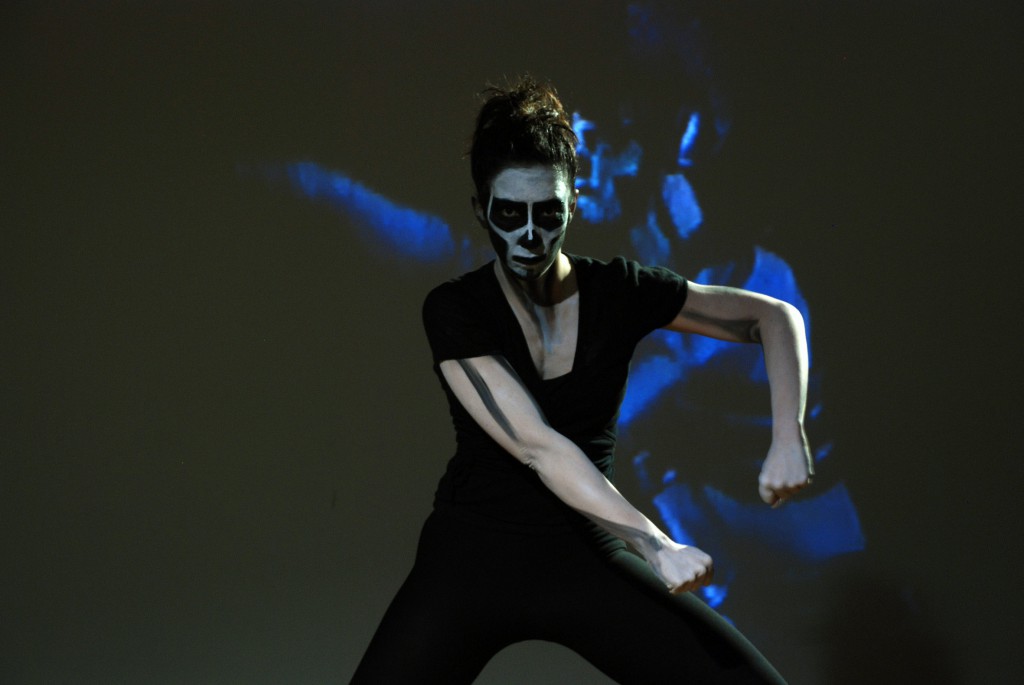
Isa Rosenberger. Still from "Espiral - A Dance of Death in 8 Scenes," 2010. Video installation and photographs. 11 minutes. Courtesy the artist.
Rosenberger’s installation, which includes video of dancers reperforming The Green Table at various financial institutions in Austria, echoes with works to follow in the show. Next to it is a work by Ressler and Zanny Begg, The Bull Laid Bear, 2012, featuring animation of hand-drawn bears with gold chains thuggishly dressed (in reference to a bearish market, get it?) interrupted by interviews conducted with economists and financial analysts. Like the Rosenberger installation before it, Ressler’s and Begg’s video compels us to think about the financial crisis (and speculative capitalism in general) through poignant illustrations of how the financial market actually works.
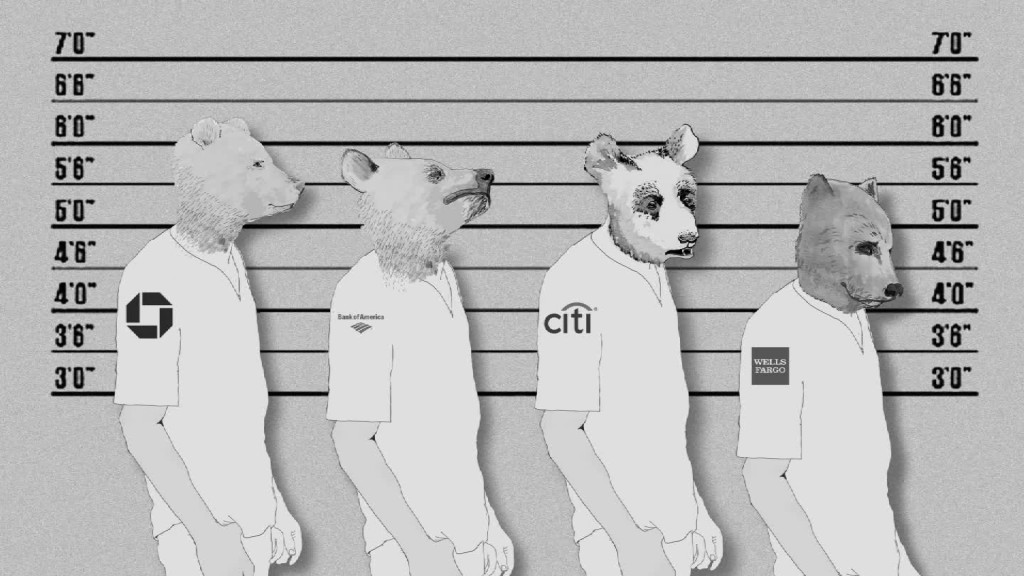
Zanny Begg / Oliver Ressler. Still from "The Bull Laid Bear," 2012. Video, 24 minutes. Courtesy the artists.
The edutainment value of the exhibition continues downstairs with video works by Alicia Herrero and Melanie Gilligan, the first featuring a conference in Buenos Aires which brought together economists, artists, and public intellectuals to reconsider the financial crisis through a Marxist economic lens and through aesthetic responses to the crisis (Bank: Art & Economics, 2010). In one presentation, an economist discusses the causes of the eclipse of Marxist economics, historicizing them through the fall of Soviet/Eastern bloc communism. In another, an artist discusses her efforts to produce bar codes so that people can purchase items at stores without having to pay for them. Gilligan’s video in four episodes, Crisis in the Credit System, 2008, is impressive for the ways it weaves together language from the financial sector, projecting a set of characters who, through a series of workshops, are prompted to imagine ways to cope with a precarious financial climate. Taking her cue from television dramas and classic theatre, Gilligan’s work brilliantly charts the twisted logic of the finance sector, hyperbolizing the ruthless competition, shamanistic market predictions, and precarious affective lives of financial workers. At the end of the miniseries the workshoppers of Crisis in the Credit System realize that all along, their workshop has been intended to prepare them for lay-offs; that they are in fact the intended beneficiaries of “risk management,” not their clients as they were led to believe.
In the same space that one views Gilligan’s and Herrero’s videos, one can see two more videos, the first projected on a wall, the other accompanied by headphones. The wall projection, The Anarchist Banker, 2010, by Jan Peter Hammer, reenvisions Fernando Pessoa’s 1922 text by the same name, in which the Portuguese poet concocts a dialogue between a banker and his secretary in order to reveal the exploitative financial logic of his era, as a dialogue between a contemporary corporate mogul and a Charlie Rose type late night talk show host. During the interview the corporate mogul is asked about how his early life as a professed anarchist evolved into his present day economic philosophy. Through the dialogue of the two actors, Hammer reveals the resemblance between liberal financial deregulation and anarchist political philosophy to be superficial. Where anarchism practices direct forms of self and communal governance, neoliberalism obviously relies on complex legal and governmental structures for its purported freedoms.
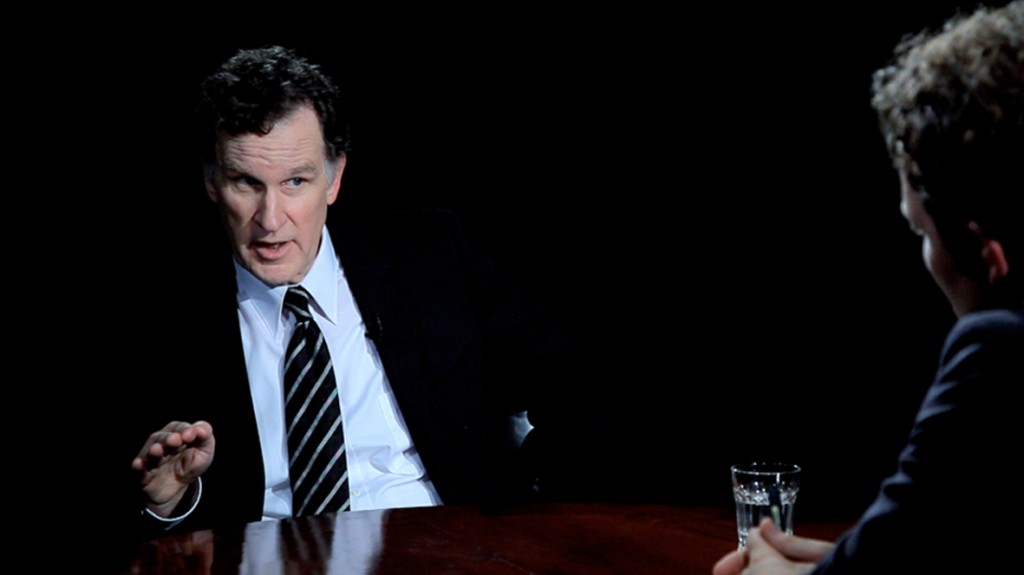
Jan Peter Hammer. Still from "The Anarchist Banker," 2010. Video, 30 minutes. Courtesy Supportico Lopez Gallery, Berlin, Germany.
In contrast to Hammer’s lehrstück, Yevgeniy Fiks’s, Olga Kopenkina’s, and Alexandra Lerman’s project, Reading Lenin with Corporations, 2010/2011, in which they interview economists and finance workers about Vladimir Lenin’s text, Imperialism, the Highest Stage of Capitalism, offers a perhaps more nuanced approach to critiquing neoliberalism. In a series of videos, interview footage is punctuated by quotations from Lenin that anticipate and comment upon contemporary logics of speculative capitalism. Bringing economists and analysts together to ponder Lenin’s text offers a telling glimpse into ways that basic points made by Lenin 100 years ago are still misunderstood (or ignored as inconvenient truths) by those in the financial sector. In some cases, it also offers a view of ways that analysts and economists are genuinely grappling with the contradictions of capitalism in an attempt to envision alternative economic systems.
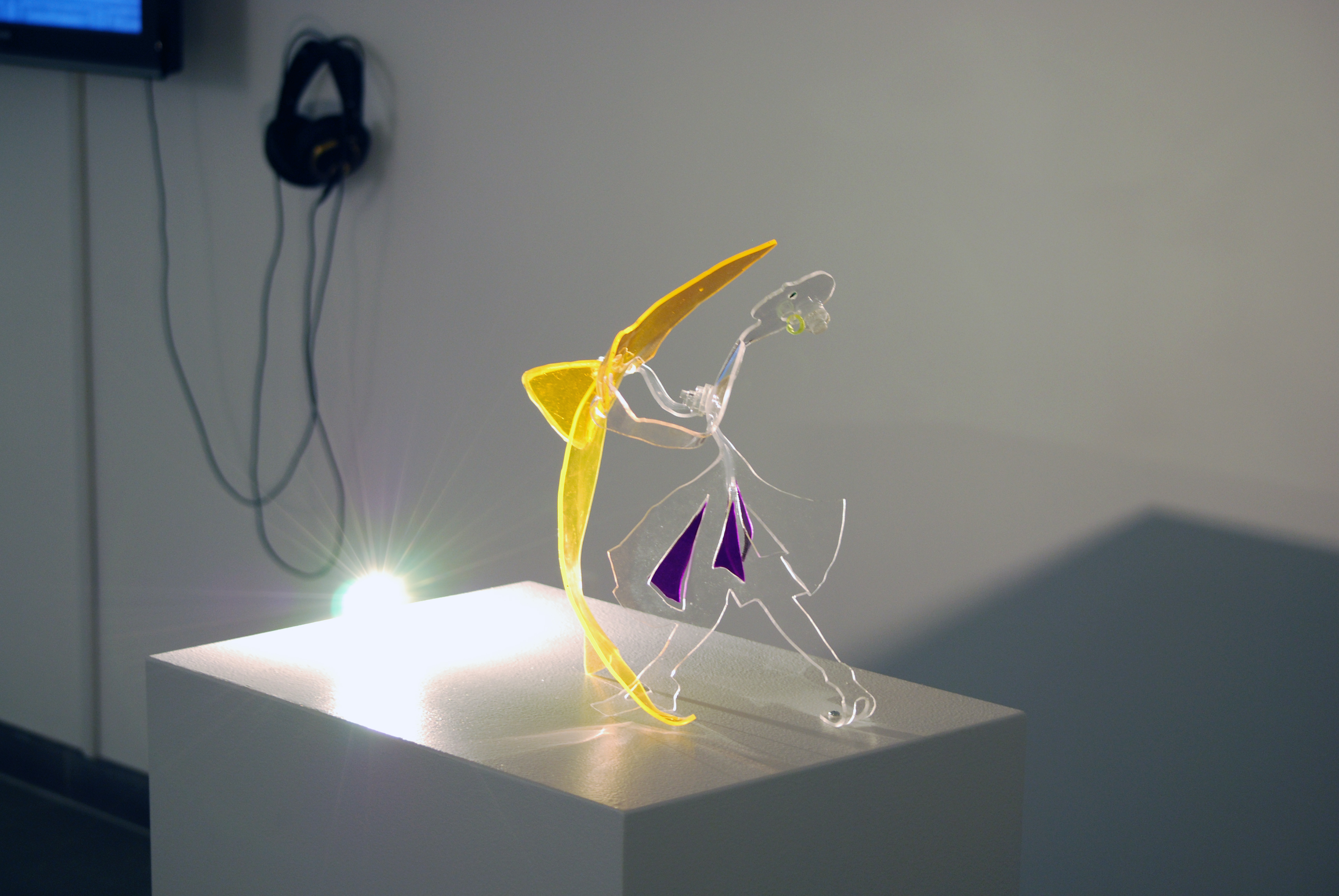
Linda Bilda. "Labor and Capital," 2004. Sculpture. Dimensions variable. Courtesy the artist. Installation View at the ACFNY. Photo by ACFNY.
Dance is a metaphor that recurs throughout the exhibition. In Rosenberger’s installation financial capital, and the erosion of public banking first in Europe and Eastern Europe in the 30s and now globally in our present, is imagined after Joos as a dance of death giving way to the fascisms which, as Brecht recognized, are capitalism’s counterpart. In yet another work, Linda Bilda’s sculpture Labor and Capital, 2004, labor and capital are depicted as a shark and a ballerina engaged in a tango. As a plaque beside the work explains: “Capital always wants profit by any means and at the expense of labor.”
Dance emerges less as a metaphor, and more as an appropriated form for spectacular action, in the Spanish group flo6x8’s video, Body Versus Capital, 2011, which compiles video of the group’s dancing and singing Flamenco in banks throughout Seville. This work, unlike any other work in the exhibit, documents a form of protest that I find extremely compelling for its tactical reappropriation of a traditional cultural form. Were the members of flo6x8 who perform these songs and dances not virtuosic, I do not think that their work would be nearly as successful. Harnessing the power of this cultural form native to Spain, which relies almost completely on the body (with the exception of basic prosthetics such as heel-toed boots and acoustic guitars) the group activates and agitates a social body. In one video from the compilation, we see a member of the group spill pennies on the floor of a bank, then begin to dance over them. In another, no less than twenty dancers “swarm” a bank, forming rows and then a circle. Bank security guards seem at a loss about how to remove the dancers. At one point we see a security guard in pursuit of a dancer as she twirls away from him, continuing to dance.
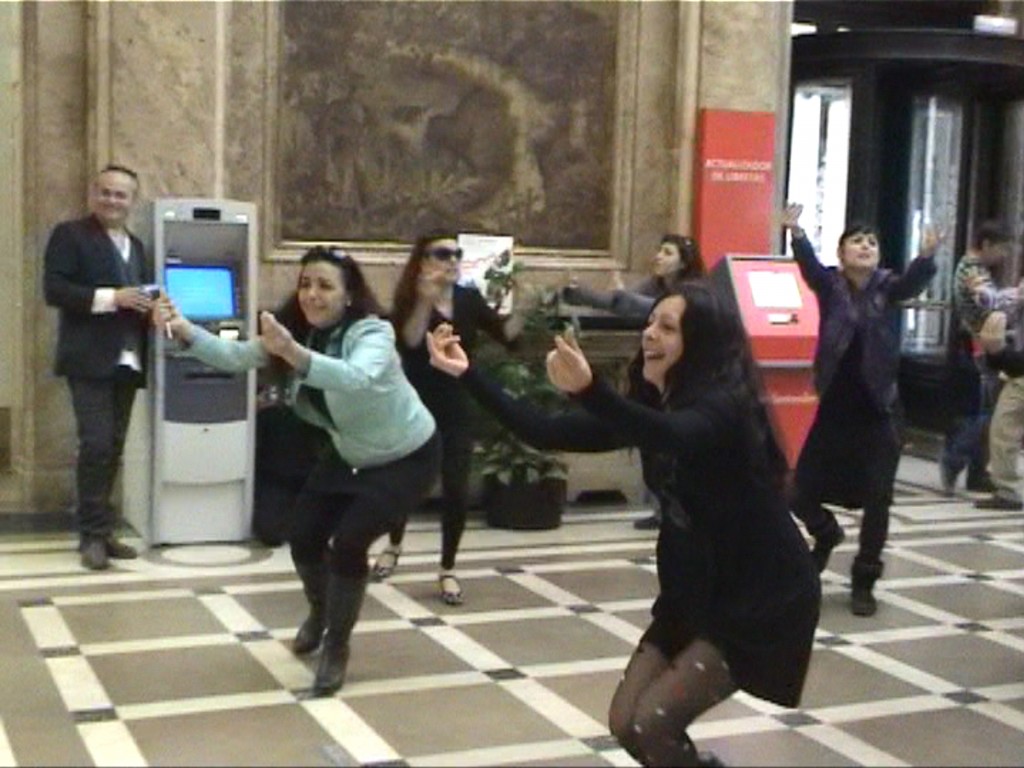
flo6x8 Still from "Body Versus Capital," 2011. Video, 40 minutes. Courtesy of Camping Productions & anticapitalist flamenco group flo6x8, Seville, Spain.
Although the title of the work may suggest a Luddite sensibility, a withdrawal of the actual body from electronic protest, this is not the case as the video foregrounds the sophisticated ways that the group has mobilized social and popular media in their work. In their video they include footage of a David Letterman style “late show” program, in which the hosts poke fun at the protesters, dancing on bills instead of pennies. The talk show host explains that they can afford bills because they are on TV, an explanation that flo6x8 loop repeatedly, emphasizing the host’s swagger, if not also his complicity with regards to the financial system. Much of the footage also consists of surveillance camera footage, foregrounding the ways that the group uses media tactically to create spectacle.
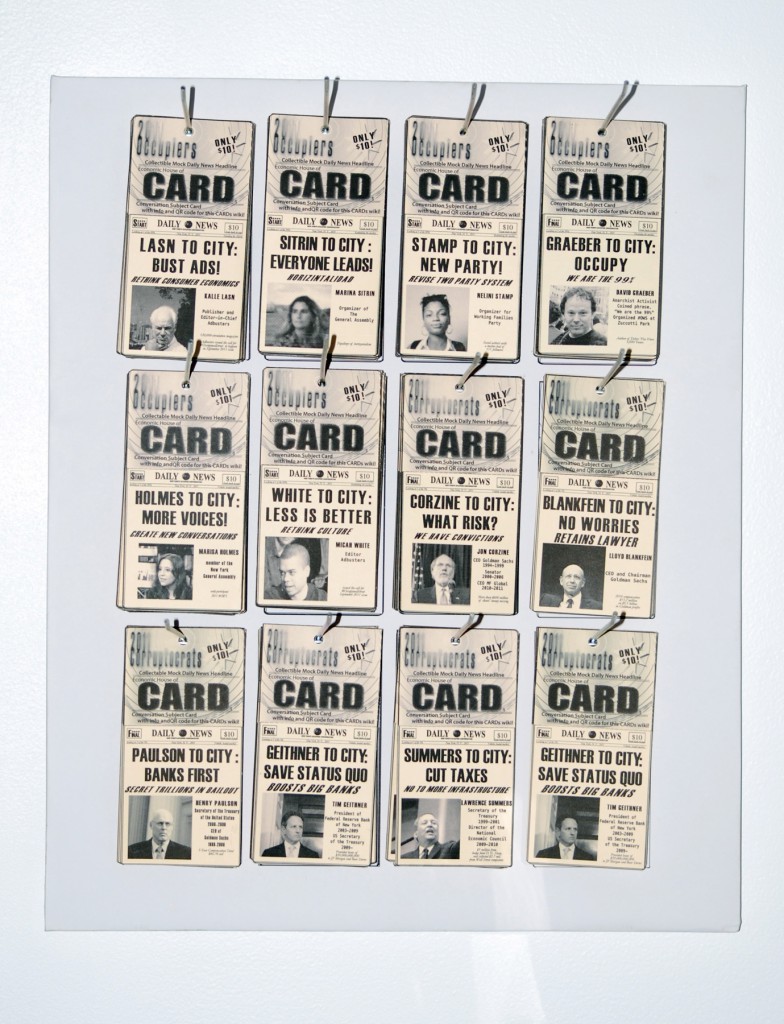
Institute for Wishful Thinking. "Post-Fordist Variations," 2011. Mixed media. Courtesy the artists. Installation View at the ACFNY. Photo by David Plakke.
Further offering levity to the exhibition is the Institute for Wishful Thinking’s Post-Fordist Variations, 2011, an installation that playfully remediates a Daily News headline, “Ford to City: Drop Dead,” which refers to Gerald Ford’s refusal to bail out a bankrupt New York City in the mid-70s, a gesture that set the tone for present day IMF/Word Bank-style austerity plans. Drawing upon the irony of the recent bailouts, Institute for Wishful Thinking’s installation, like other works in the exhibition, educates us about how we got to the financial crisis of 2008. As with other works by Institute for Wishful Thinking, Post-Fordist Variations imagines a different set of possibilities and positions through which we might overcome structural inequality, eschewing such practices as austerity plans which favor “developed” countries over the “third world,” and which leave wealth and power within only a few hands. In a similar vein, Linda Bilda’s murals throughout the exhibition playfully illustrate hierarchies, in which one can see how the upper economic echelons are bolstered by forms of exploitation in the realm of both the social and economic. These murals, like many of the works in the exhibit, are no less compelling for their attempts to educate and inform a public.
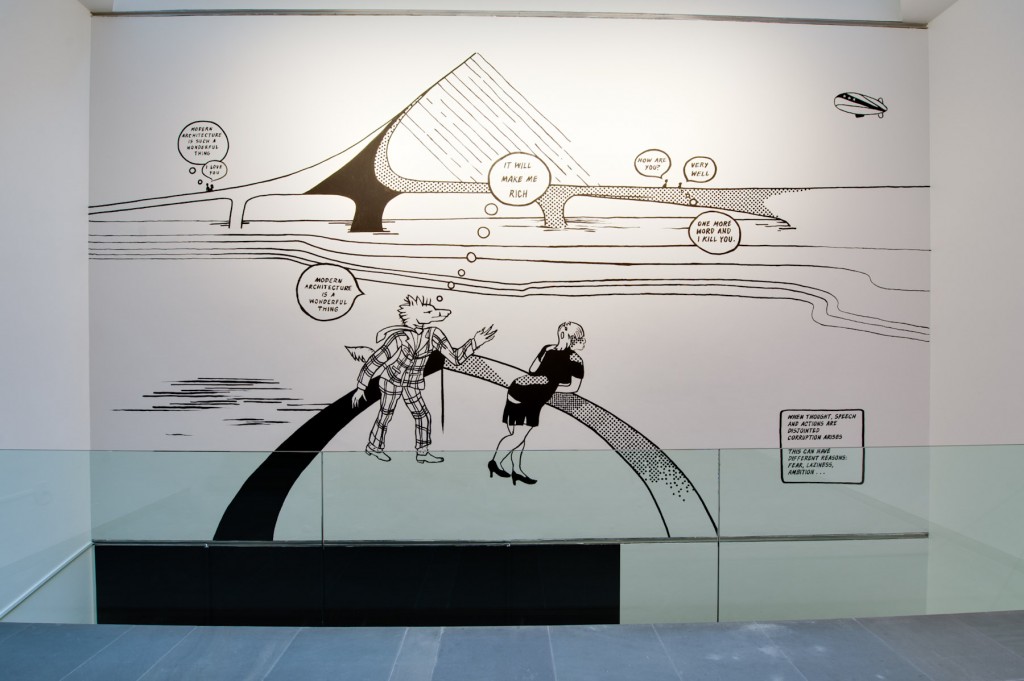
Detail from "The Future and End of the Golden World," 2011. Wall mural. Dimensions variable. Courtesy the artist. Installation View at the ACFNY. Photo by David Plakke.

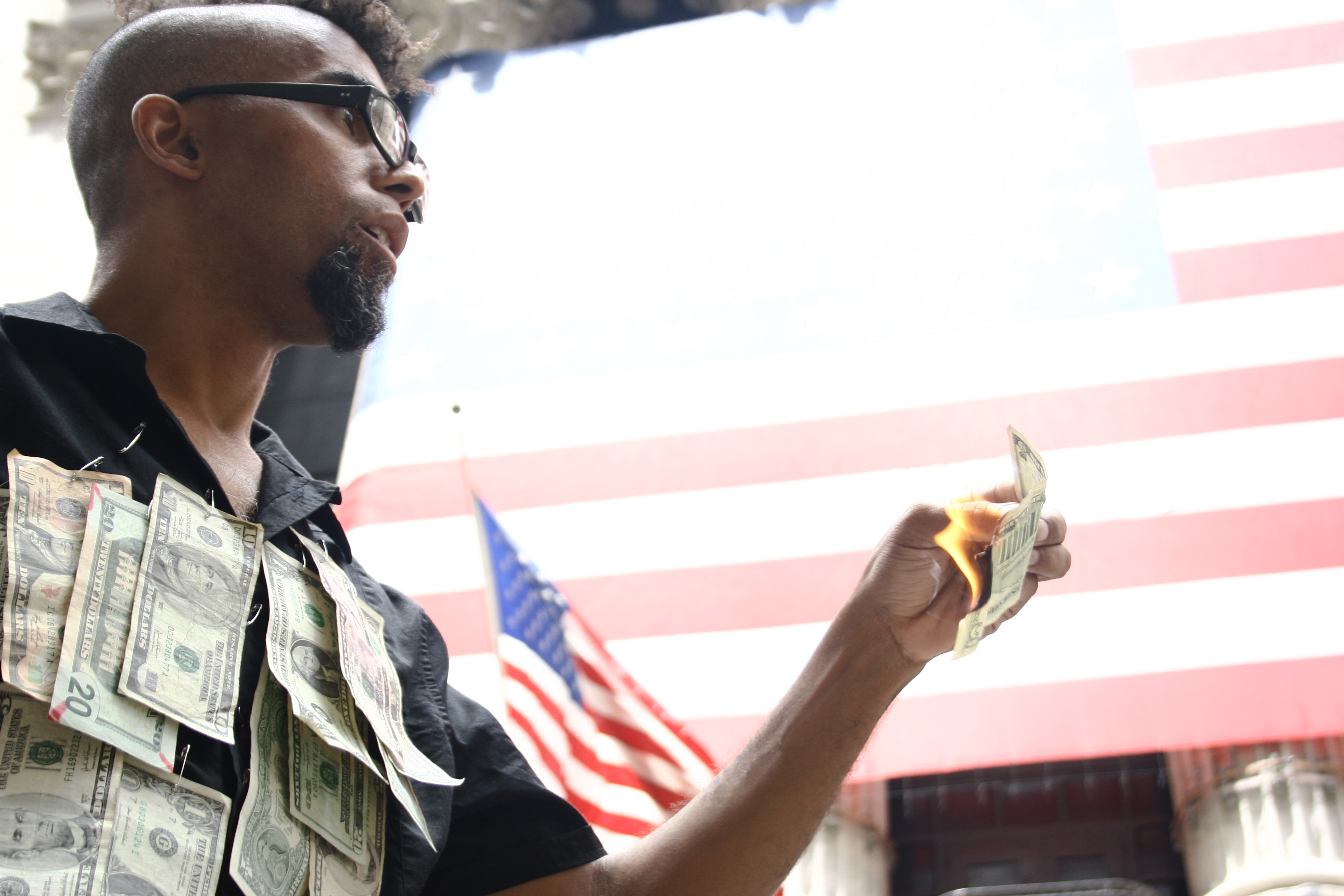
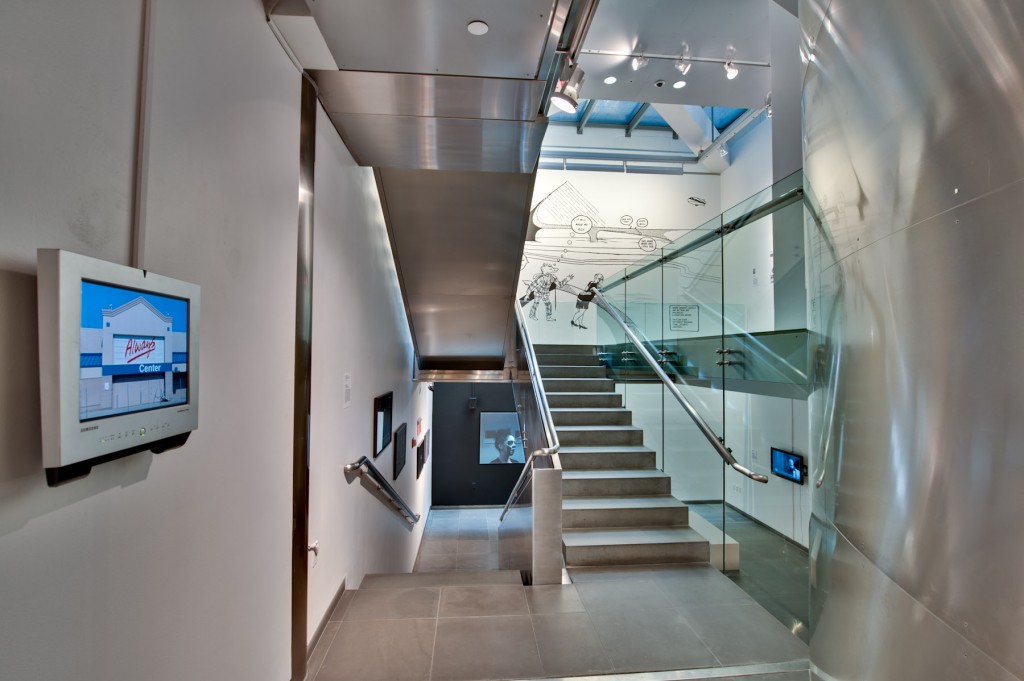
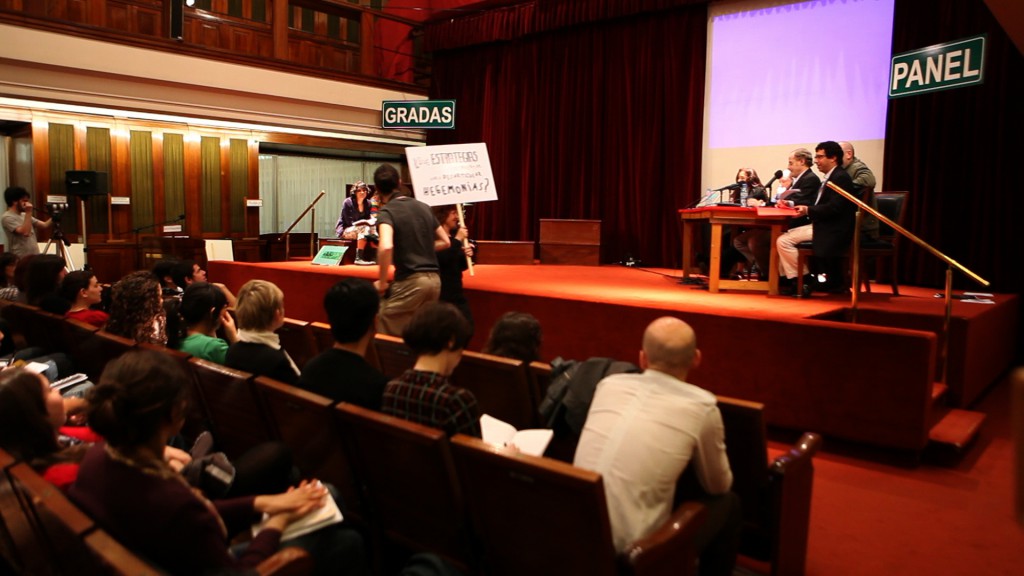



Pingback: 5 Questions for Contemporary Practice | (It’s the Political Economy, Stupid) | 全球汽车与工业设计资讯
Pingback: Episode 428: Oliver Ressler and Gregory Sholette : Bad at Sports